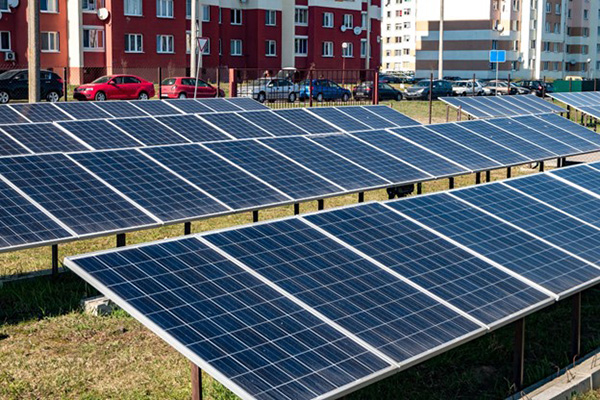Accessing clean and sustainable energy seems like it should be a fundamental right, but that’s not always the case. Many families experience energy insecurity, leaving them struggling to figure out how to pay their energy bills every month. This inequity forces some families to choose which necessities they can temporarily delay paying to keep the lights on.
This is why Texas energy affordability and equity must take center stage. With an equitable system, we can ensure all families can access energy without skipping out on the necessities in life. Below, we’ll review energy affordability and equity, why it’s breaking down in Texas, and how it can be fixed.
What Is Energy Affordability?
The Department of Energy (DoE) defines energy affordability as the ability to pay for household electricity without negatively impacting the ability to afford necessities like food, medication, and rent.
To determine your energy affordability, you must calculate the percentage of your income that goes toward energy costs by dividing your monthly energy costs by your monthly income. This is known as the energy burden.
For reference, the average energy burden for a non-low-income household is about 3%, and you’re considered to have a high energy burden if it’s 6% or higher. Anything greater than 10% is regarded as a severe energy burden.
A high energy burden can negatively impact your household’s finances and force you to choose between paying for your energy consumption or other necessities like food and healthcare.
Factors Impacting Energy Affordability
Numerous interconnected factors can influence energy costs, and exploring them is essential to fully understanding energy affordability, including:
- Energy affordability: The price of fuel sources, such as coal, oil, or natural gas, which directly impacts energy costs.
- Infrastructure maintenance and upgrades: Aging infrastructure requiring frequent repairs and maintenance can also increase energy expenses.
- Regulatory fees: Government-imposed regulatory fees affect overall energy costs directly.
- Market dynamics: Supply and demand, for example, can cause prices to fluctuate.
How Energy Affordability Impacts Households
Energy prices have a critical impact on households — primarily low-income households or those with limited financial flexibility. As energy costs rise, families may have to make difficult decisions, such as limiting energy usage or skipping other necessities to pay their electric bill.
Lowering energy consumption is generally positive, as it helps reduce our carbon footprint. However, reducing energy use due to a high energy burden can be harmful, causing discomfort and posing health risks, particularly during extreme weather conditions.
And with climate change leading to more extreme weather events in Texas, such as extreme heat and cold, this becomes an even more critical issue.
Higher energy prices disproportionately affect vulnerable populations, exacerbating energy poverty and inequality. This disparity shows the need for equitable energy policies in Texas and initiatives that focus on affordability and accessibility for everyone.
It is crucial to address the challenges vulnerable populations face and find solutions to mitigate the impact of rising energy prices.
What’s the State of Energy Equity in Texas?
What is energy equity? It’s the fair and just distribution of energy resources and benefits. To truly achieve energy equity in Texas, we must bridge the gaps between communities, socioeconomic backgrounds, and geographic locations, ensuring everyone can access affordable energy.
Energy equity is critical to energy affordability for all Texans. However, inequity in energy access and affordability still exists in the Texas energy market.
Many low-income households and other vulnerable communities face high energy burdens. One factor leading to these high energy burdens is that they often live in older, less energy-efficient homes. This results in more energy consumption to heat and cool their homes, increasing their energy costs.
Fortunately, some policies and programs exist to help these households.
Policies to Support Affordable Energy in Texas
Policies and programs exist in Texas to help with energy equality by reducing energy costs, increasing energy efficiency, and supporting vulnerable communities. Looking into these policies and finding potential improvements may help support Texas energy affordability and equity.
Two programs that help vulnerable communities are the Low-Income Home Energy Assistance Program (LIHEAP) and the Weatherization Assistance Program (WAP).
LIHEAP is a federally funded program offering financial assistance to eligible low-income households to help them pay their energy bills. On top of this, it also helps with energy crisis assistance, weatherization, and energy-related home repairs.
The Texas Department of Housing and Community Affairs (TDHCA) operates the Weatherization Assistance Program (WAP). This program helps make low-income families’ homes more energy-efficient through weatherization. WAP provides households with free energy-efficiency upgrades, such as insulation, weatherstripping, and energy-efficient heating and cooling systems. These upgrades reduce energy consumption and lower energy bills so these low-income families can meet their energy needs.
While these programs have made significant strides in addressing energy affordability, there is still room for improvement.
How Can Texas Improve Its Energy Equity Programs?
Low-income households often have limited access to the helpful energy-efficiency programs mentioned above. Sometimes, these residents don’t know about or understand available resources. However, Texas can increase the effectiveness of these programs and build energy equity in several ways. Let’s review a few options.
Increase Awareness and Accessibility of Energy Efficiency Programs
Energy efficiency programs can play prominent roles in helping low-income households and other vulnerable communities reduce their energy burden. These programs help in several ways, including teaching energy conservation and helping with home weatherization and repairs to increase efficiency. The big downside to them is that many low-income households lack access to these programs or are unaware they exist.
Opening access to and spreading the knowledge of these energy efficiency programs among low-income households can go a long way in the proliferation of Texas energy affordability and equity. Texas can reach this by launching strategic outreach programs within these communities. This outreach will not only help bring access to underserved communities but may also help them understand how to get the help they need.
Broaden the Knowledge of Other Assistance Programs
Support for reducing energy burden for people in vulnerable communities goes beyond the energy efficiency programs mentioned above. They can also leverage other assistance programs, rebates, and incentives. However, many Texans, including those in marginalized communities, may be unaware of these programs and how they help reduce energy costs.
Texas can overcome this issue through educational initiatives outlining these energy resources and other awareness-enhancing programs. Some ways to deliver this information include:
- Hosting community workshops
- Distributing informational materials in multiple languages
- Developing online resources.
This increased awareness and understanding can help individuals and households make informed decisions about their energy usage and access the resources that can help them.
Improve Coordination Between Stakeholders
Collaboration between policymakers, local governments, utilities, and community organizations can help develop and implement solutions to spread energy equity in Texas.
With collaboration, policymakers and local governments can create regulations and policies that support energy equity while utility companies develop programs and initiatives to help low-income and marginalized communities. While that occurs in the background, community organizations can implement outreach, education, and advocacy programs to ensure those affected by energy inequity have a voice in developing these policies and programs.
What Is Renewable Energy’s Role in Affordability?
While dismissing renewable energy as expensive technology with no role in Texas energy affordability and equity is easy, that’s not the case.
In fact, by investing in alternative energy sources, governments can contribute to energy affordability because a shift to clean energy can help reduce Texans’ reliance on fossil fuels. This may help alleviate one of the significant causes of energy insecurity: frequent and unpredictable price fluctuations.
Unlike fossil-fuel-powered power plants, renewable energy sources, such as solar and wind, generally lead to more stable pricing.
Renewable Energy Can Make a Difference in Texas Energy Affordability and Equity
Texas has experienced growth in its renewable energy sector, as it is projected to be the second-largest solar market in the U.S. by 2028 and has several times the wind-generated power of any state.
Texas has three things in its favor for building a tremendous renewable energy infrastructure: abundant land, sunlight, and wind. This makes increasing renewable energy generation by installing solar and wind farms in Texas a reality. And as Texas expands its renewable energy capacity, it can help stabilize electricity prices and reduce energy insecurity.
How Renewable Energy Can Improve Affordability
Renewable energy can help improve affordability in multiple ways. We already mentioned how it helps relieve the price volatility associated with fossil fuels by installing solar and wind farms on Texas’ vast amounts of open land. On top of this, renewable energy can also allow households to generate their own power through rooftop solar panels. This may dramatically reduce their dependence on a grid powered by fossil fuels and lower their bills.
And this is all while reducing their carbon footprints — it’s a win-win situation.
One downside to solar panels is that they often have prohibitive upfront costs — especially when speaking of communities that may already struggle to make ends meet. This is where community solar projects can come into play. In these projects, a community comes together with a solar developer to build an on-site or off-site solar farm that then uses net metering — when the energy created by the solar farm is used to reduce energy bills for all owners of the solar farm — to reduce their energy prices based on a percent of ownership of the solar farm.
For example, suppose the community funds a solar farm that generates 10,000 kWh of energy per month, and each resident holds 5% ownership in the farm. In that case, they each get a 500 kWh credit on their energy bill for that period. This means if you end up with a 1,000-kWh electric bill, you will only need to pay for 500 kWh.
Texas’ Future in Renewable Energy
Texas has a promising future in renewable energy, as the state has set ambitious renewable energy targets and attracts significant investment in renewable projects. By riding this wave of investment in renewable energy, Texas can continue leveraging this evolving technology to help stabilize prices and reduce energy insecurity in the state. Some great side effects of this movement are job creation, reduced greenhouse gas emissions, improved air quality, and contribution to a more sustainable future. Everyone wins.
Texas Energy Affordability and Equity Is Possible and Necessary
Texas energy affordability and equity are crucial for ensuring that energy remains affordable for all residents of the Lone Star State. Understanding energy affordability, addressing energy equity disparities, implementing effective policies, and leveraging renewable energy sources are essential steps in achieving this goal. By prioritizing affordability and equity, Texas can create a more inclusive and sustainable energy future for all its residents.
Other ways exist to reach energy affordability and equity in Texas, and that includes giving residents of vulnerable communities the ability to choose an electricity provider that suits their financial needs. Just Energy offers a wide range of energy plans to help you save money on your electricity, natural gas, and other energy costs. Find out more about how much you can save by checking out Just Energy’s plans today.
Brought to you by justenergy.com
All images licensed from Adobe Stock.
- SEO Powered Content & PR Distribution. Get Amplified Today.
- PlatoData.Network Vertical Generative Ai. Empower Yourself. Access Here.
- PlatoAiStream. Web3 Intelligence. Knowledge Amplified. Access Here.
- PlatoESG. Carbon, CleanTech, Energy, Environment, Solar, Waste Management. Access Here.
- PlatoHealth. Biotech and Clinical Trials Intelligence. Access Here.
- Source: https://justenergy.com/blog/texas-energy-affordability/







